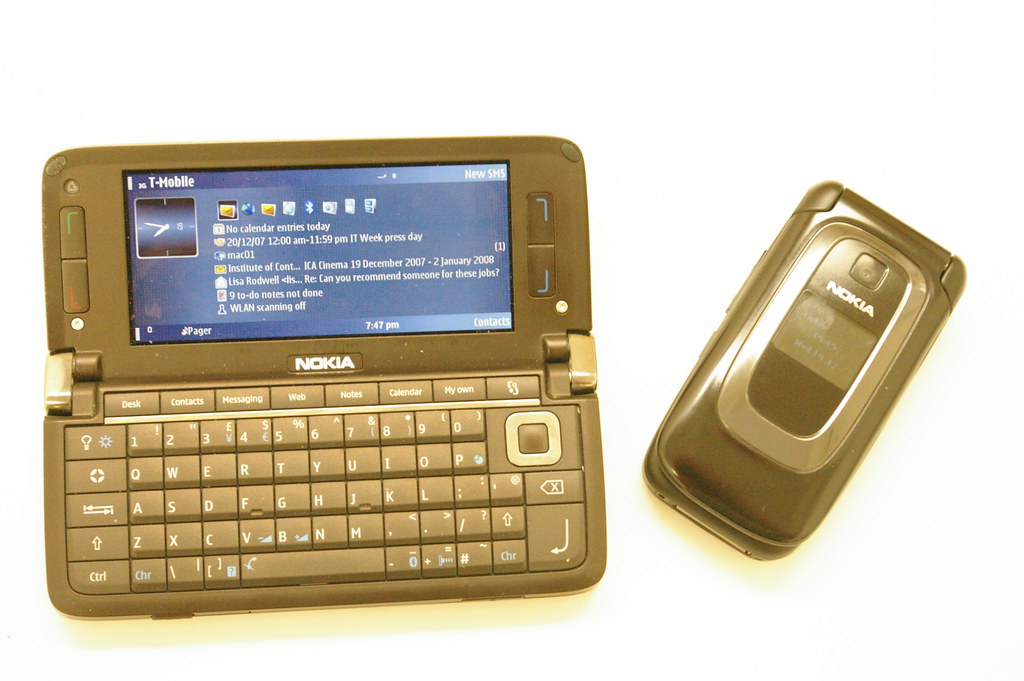4 minutes estimated reading time
A decade of the iPhone – last week has seen people looking back at the original launch. At the time, I was working an agency that looked after the Microsoft business. I used a Mac, a Nokia smartphone and a Samsung dual SIM feature phone. At the time I had an Apple hosted email address for six years by then, so I was secure within the Apple eco-system. I accessed my email via IMAP on both my first generation MacBook Pro and the Nokia smartphone.
Nokia had supported IMAP email for a few years by then. There were instant messaging clients available to download. Nokia did have cryptographic signatures on app downloads, but you found them on the web rather than within an app store.
At the time BlackBerry was mostly a business device, though BlackBerry messaging seemed to take off in tandem with the rise of the iPhone. The Palm Treo didn’t support IMAP in its native email application, instead it was reliant on a New Zealand based software developer and their paid for app SnapperMail.
Microsoft had managed to make inroads with some business users, both Motorola and Samsung made reasonable looking devices based on Windows.
The iPhone launch went off with the characteristic flair you would expect from Steve Jobs. It was a nice looking handset. It reminded me of Palm Vx that I used to have, but with built in wireless. Whilst the Vx had a stylus, I had used my fingers to press icons and write Graffiti to input text. It looked good, but it wasn’t the bolt from the blue in the way that others had experienced it.
But in order to do work on the Palm, I had a foldable keyboard that sat in my pocket.
By the time that the iPhone launched, I was using a developer version of the Nokia E90 which had an 800 pixel wide screen and a full keyboard in a compact package.
I had Wi-Fi, 3 and 3.5G cellular wireless. I could exchange files quickly with others over Bluetooth – at the time cellular data was expensive so being able to exchange things over Bluetooth was valuable. QuickOffice software allowed me to review work documents, a calendar that worked with my Mac and a contacts app. There was GPS and Nokia Maps. I had a couple of days usage on a battery.
By comparison when the iPhone launched it had:
- GSM and GPRS only – which meant that wireless connectivity was slower
- Wi-Fi
- Bluetooth (but only for headphone support)
- No battery hatch – which was unheard of in phones (but was common place in PDAs
- No room for a SD, miniSD or microSD card – a step away from the norm. I knew people who migrated photos, message history and contacts from one phone to another via an SD card of some type
I wasn’t Apple’s core target market at the time, Steve Jobs used to have a RAZR handset.
As the software was demoed some things became apparent:
- One of the key features at the time was visual voicemail. This allowed you to access your voicemails in a non-linear order. This required deep integration with the carrier. In the end this feature hasn’t been adopted by all carriers that support the iPhone. I still don’t enjoy that feature. I was atypical at the time as I had a SIM only contact with T-Mobile (now EE), but it was seemed obvious that Apple would pick carrier partners carefully
- There was no software developer kit, instead Apple encouraged developers to build web services for the iPhone’s diminutive screen. Even on today’s networks that approach is hit-and-miss
- The iPhone didn’t support Flash or Flash Lite. It is hard to explain how much web functionality and content was made in Adobe Flash format at the time. By comparison Nokia did support Flash, so you could enjoy a fuller web experience
- The virtual keyboard was a poor substitute for Palm’s Graffiti or a hardware keyboard – which was the primary reason that BlackBerry users held out for such a long time
- The device was expensive. I was used to paying for my device but wasn’t used to paying for one AND being tied into an expensive two year contract
- Once iPhones hit the street, I was shocked at the battery life of the device. It wouldn’t last a work day, which was far inferior to Nokia
I eventually moved to the Apple iPhone with the 3GS. Nokia’s achilles’ heel had been its address book which would brick when you synched over a 1,000 contacts into it.
By comparison Apple’s contacts application just as well as Palm’s had before it. Despite the app store, many apps that I relied upon like CityTime, MetrO and the Opera browser took their time to get on the iPhone platform. Palm already was obviously in trouble, BlackBerry had never impressed me and Windows phone still wasn’t a serious option. Android would have required me to move my contacts, email and calendar over to Google – which wasn’t going to happen.
